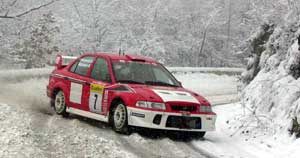Search will attempt to find all articles within the system that contain any or all words you are looking for.
You can include words like "and" + "or" for boolean style searching. Some search examples as follows:
- "Ford v8" - Results will contain the text as it appears in the search "Ford v8".
- "Ford and v8" - Results will have both "Ford" and "v8" within its contents but may not be sequential as per previous example.
- "Ford or Holden and v8" - Results found will contain "v8" and also contain either "Ford" or "Holden".
You may also use wildcards represented by an asterisks. For example:
- "Turbo*" - will find all documents that contain words like "Turbocharged", "Turbo-Diesel".
- "Ford and v*" - Results will have both "Ford" and any word that has "V", so you may find documents about Volvo that mention Ford.
Please note: Due to the number of articles, searches may take a few moments to respond.






















 Abarth
Abarth Acura
Acura Alfa Romeo
Alfa Romeo Alpina
Alpina Alpine
Alpine APV
APV Ariel
Ariel Aston Martin
Aston Martin Audi
Audi Bentley
Bentley Bertone
Bertone BMW
BMW Bolwell
Bolwell Brabham
Brabham Brilliance
Brilliance Bristol
Bristol Bufori
Bufori Buick
Buick Cadillac
Cadillac Callaway
Callaway CAT
CAT Caterham
Caterham Chery
Chery Chevrolet
Chevrolet Chrysler
Chrysler Citroen
Citroen Cupra
Cupra Czinger
Czinger Dacia
Dacia Daewoo
Daewoo Daihatsu
Daihatsu Dodge
Dodge DS
DS Edag
Edag Ferrari
Ferrari Fiat
Fiat Fioravanti
Fioravanti Fisker
Fisker Ford
Ford Foton
Foton FPV
FPV Frazer-Nash
Frazer-Nash Great Wall
Great Wall GTA
GTA GWM
GWM Haval
Haval Hino
Hino Holden
Holden Honda
Honda HSV
HSV Hulme
Hulme Hummer
Hummer Hyundai
Hyundai Infiniti
Infiniti Isuzu
Isuzu Iveco
Iveco Jaguar
Jaguar Jeep
Jeep Joss
Joss Kia
Kia KTM
KTM Lada
Lada Lamborghini
Lamborghini Lancia
Lancia Land Rover
Land Rover LDV
LDV Leblanc
Leblanc Lexus
Lexus Lifan
Lifan Lightning
Lightning Lincoln
Lincoln Loremo
Loremo Lotus
Lotus Mahindra
Mahindra Maserati
Maserati Maxus
Maxus Maybach
Maybach Mazda
Mazda McLaren
McLaren Mercedes-AMG
Mercedes-AMG Mercedes-Benz
Mercedes-Benz MG
MG Mini
Mini Mitsubishi
Mitsubishi Morand
Morand Morgan
Morgan Nissan
Nissan Noble
Noble Opel
Opel Pagani
Pagani Peugeot
Peugeot Pininfarina
Pininfarina Pontiac
Pontiac Porsche
Porsche Prodrive
Prodrive Proton
Proton Ram
Ram Renault
Renault Rinspeed
Rinspeed Rolls-Royce
Rolls-Royce Ronn
Ronn Rover
Rover Saab
Saab SAIC
SAIC Saleen
Saleen Saturn
Saturn Savage
Savage Seat
Seat Skoda
Skoda Smart
Smart Spyker
Spyker SsangYong
SsangYong Subaru
Subaru Suzuki
Suzuki Tata
Tata Tesla
Tesla Toyota
Toyota Trident
Trident TVR
TVR V-Vehicle
V-Vehicle Vauxhall
Vauxhall Volvo
Volvo Zagato
Zagato Zeekr
Zeekr Zenvo
Zenvo





